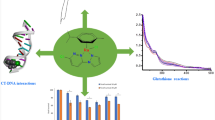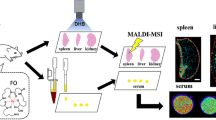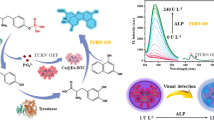Abstract
The electrophilic Ag+ ion was found to destroy completely the enzymatic activity of lactate dehydrogenase isoenzyme LDH-1 while other transition metal ions reduced its activity in varying degrees. A radiotracer probe involving110mAg-labeled silver ion was used to understand the mechanism of denaturation of LDH and also to determine the number of active sites, if any, for substrate binding with the enzyme. Purified LDH-1 was reacted with110mAg-labeled silver ion and the mixture was passed through the sephadex G-75-120 gel to separate the110mAg-LDH complex that might be formed during the reaction. The resulting elution curve revealed that a stable complex was formed. From the total radioactivity of110mAg bound LDH, the specific activity of labeled Ag+ and the amount of LDH used the ratio of the number of moles of Ag+ reacted with 1 mol of LDH was computed. This was found to be approximately 4.0, indicating that there are four binding sites in LDH, probably one on each subunit. Kinetic studies of LDH catalysis of L-P reaction in the presence and absence of Ag+ ion suggest that silver ion is involved in competitive inhibition and that the interaction conforms to the “lock-and-key” model. The inhibition of catalysis by other metals is presumably of a noncompetitive type.
Similar content being viewed by others
References
Bradford, M. M. (1976).Anal. Biochem. 72, 248–254.
Bray, R. C. (1980).Advan. Enzymology 51, 107–112.
Culp, J. S., Blytt, H. J., Hermodson, M., and Butler, L. G. (1985).J. Biol. Chem. 260, 8320–8324.
Daggett, S. G., Gruys, K. J., and Schuster, S. M. (1985).J. Biol. Chem. 260, 6213–6218.
Foreman, J. E., and Niehaus, Jr., W. G. (1985).J. Biol. Chem. 260, 10019–10022.
Holbrook, J. J., Liljas, A., Steindel, S. J., and Rossmann, M. G. (1975). InThe Enzymes (Boyer, P. E., ed.), Vol. XI, Part A, Academic Press, Orlando, Florida, pp. 191–192.
Holmquist, B., and Vallee, B. L. (1979).Proc. Natl. Acad. Sci. 76, 6216–6220.
Ikebe, M., and Hartsborne, D. J. (1985).J. Biol. Chem. 260, 13146–13153.
Jenchs, W. P. (1975).Advan. Enzymol. 43, 219–410.
McLoughlin, D. J., and Howell, M. L. (1987).Biochim. Biophys. Acta. 893, 7–12.
Menon, M. P., Anderson, G., and Nambiar, G. K. (1983).Anal. Chem. 55, 1385–1390.
Menon, M. P., Nambiar, G. K., and Nair, R. M. G. (1985).J. Radioanal. Nucl. Chem. 92, 123–132.
Menon, M. P., Hunter, F. R., and Miller, S. (1987).J. Protein Chem. 6, 413–429.
Miller, D. B., and Schwert, G. W. (1963).J. Biol. Chem. 238, 3249.
Murakami, K., Andree, P. J., and Berliner, L. J. (1982).Biochem. 21, 5488–5494.
Sabato, G. D., and Kaplan, N. O. (1964).J. Biol. Chem. 239, 438–443.
Senior, A. E., Richardson, L. V., Baker, K., and Wise, J. G. (1980),255, 7211–7217.
Vallee, B. L. (1980).Carlsberg Res. Commun. 45, 423–441.
Vallee, B. L. (1981). InStructural and Functional Aspects of Enzyme Catalysis (Eggerer, H., and Huber, R., eds.), Springer-Verlag, Berlin, pp. 75–93.
Tahenaka, Y., and Schwert, G. W. (1956).J. Biol. Chem. 223, 157.
Wacker, W. E. C., Ulmer, D. D., and Vallee, B. L. (1956).N. Engl. J. Med. 255, 449–456.
Author information
Authors and Affiliations
Rights and permissions
About this article
Cite this article
Menon, M.P., Wright, C.E. A radiotracer probe to study metal interaction with human lactate dehyrogenase isoenzymes. J Protein Chem 8, 757–766 (1989). https://doi.org/10.1007/BF01024900
Received:
Published:
Issue Date:
DOI: https://doi.org/10.1007/BF01024900




